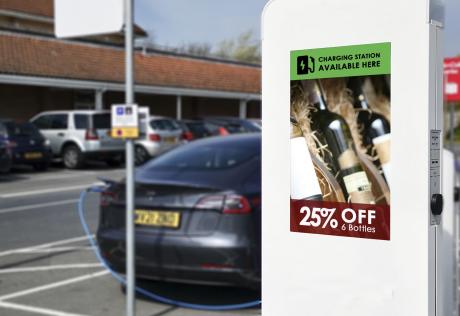Reliable connectivity is a must for charging stations to allow users to check the charging progress as well as remote monitoring of your fleet 24/7 to quickly identify malfunction and ensure quick resolution.
Keeping abreast of future technological trends within emerging markets is key to the continued success. We work side by side with our EVC customers to integrate the best solution which will help them reach their goal to lessen the gap between the time it takes to charge, versus fuel/refuel.
Ensuring reliability to reduce maintenance calls
Fanless embedded systems are perfect for typical environments where you would find EVCs, ie dirty, dusty outdoor spaces. Fans are primarily used to keep the CPU from overheating and failing; but the use of a fan in a dirty environment can lead to debris clogging it and eventually causing breakdown, leading to CPU failure, or system shutdown to. With no moving parts, the life of the system is increased and ultimately there is less need for service engineer visits to units in the field.

Fanless systems usually feature low power CPUs (generating less heat) that are rated for industrial operating temperatures. EVC stations can be deployed all over the world and often in harsh conditions for an electronic system, so true rugged embedded systems need to be specified, tested, and certified to “industrial” operating temperatures of -40°C to +85°C. The accompanying displays that are rated to these temperatures are often referred to as “automotive grade” displays. For extra protection, heatsinks can be added to the embedded system.
AI enabled systems make educated decisions without connection to the cloud
Prime real estate on EVC displays lends itself to tailored advertising opportunities. Cameras on the charging station can determine the age and gender of a customer, the system can determine the make, model and age of the car and using AI algorithms can deliver perfectly tailored messaging for each user.
There may also be instances where the system can detect when a person is in distress and offer a phone number to call for assistance.

Configurable and expandable connectivity options
Embedded systems often employ many circuit boards, centered around the main CPU board to achieve their goal. By using a System on Module approach all the peripheral systems can be drafted on one single motherboard, lowering manufacturing costs, inventory, and service costs. It also makes it easier to route any IO that requires service access through one weather proof connector.
Connectivity is not just limited to the network. Integration and communication with with internal sub-systems that drive the High Voltage Power circuitry need to be considered. We work closely with our customers who have expertise in High Voltage domains to facilitate integration of all requirements onto a single carrier board.
Designing your UI to match the function it performs
As with all menu-driven systems, EVCs rely heavily on their Graphical User Interface (GUI) layout to ensure the interface is intuitive, informative, and easy to use. Usability is key to any successful product and the GUI is underpinned by the quality of the tools used to design and deploy it and the software support provided by the team behind the embedded hardware.
Whether you’re upgrading your User Interface and keeping the hardware the same, or happy with your software but want to upgrade your hardware, the development and integration is key.


